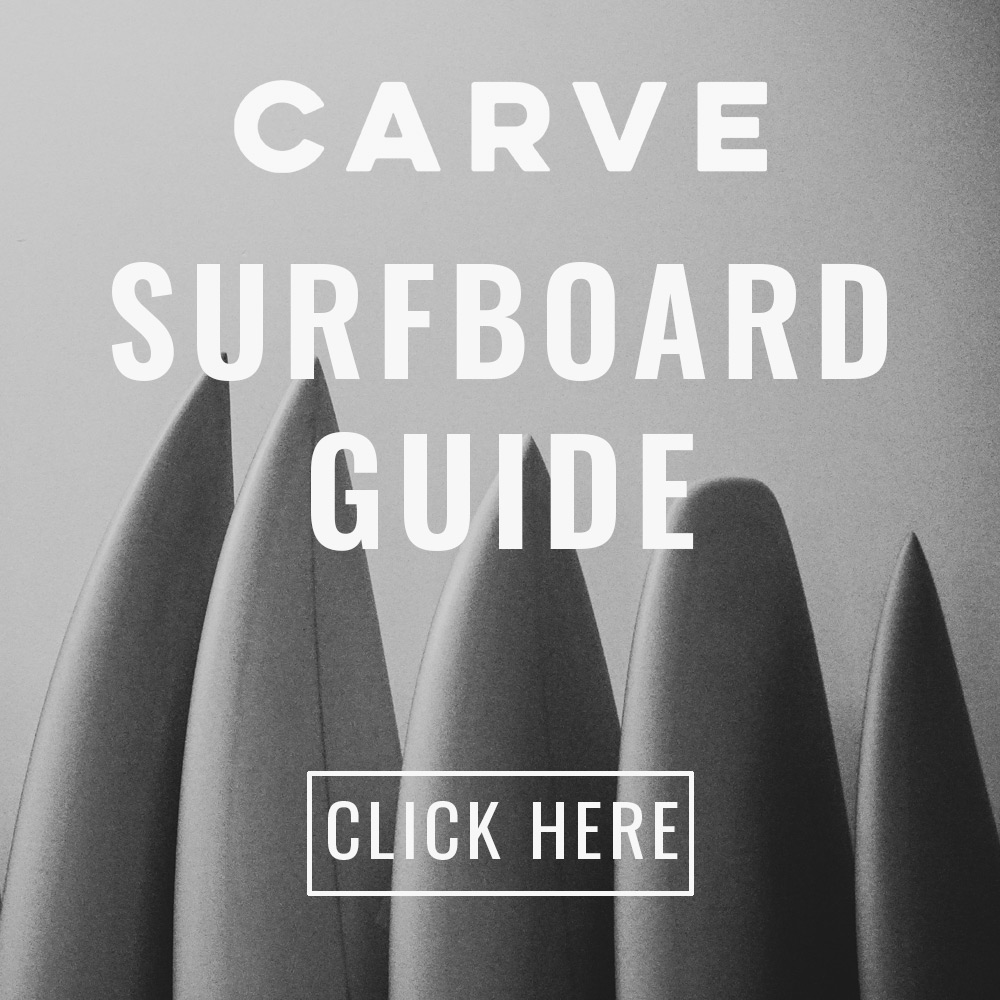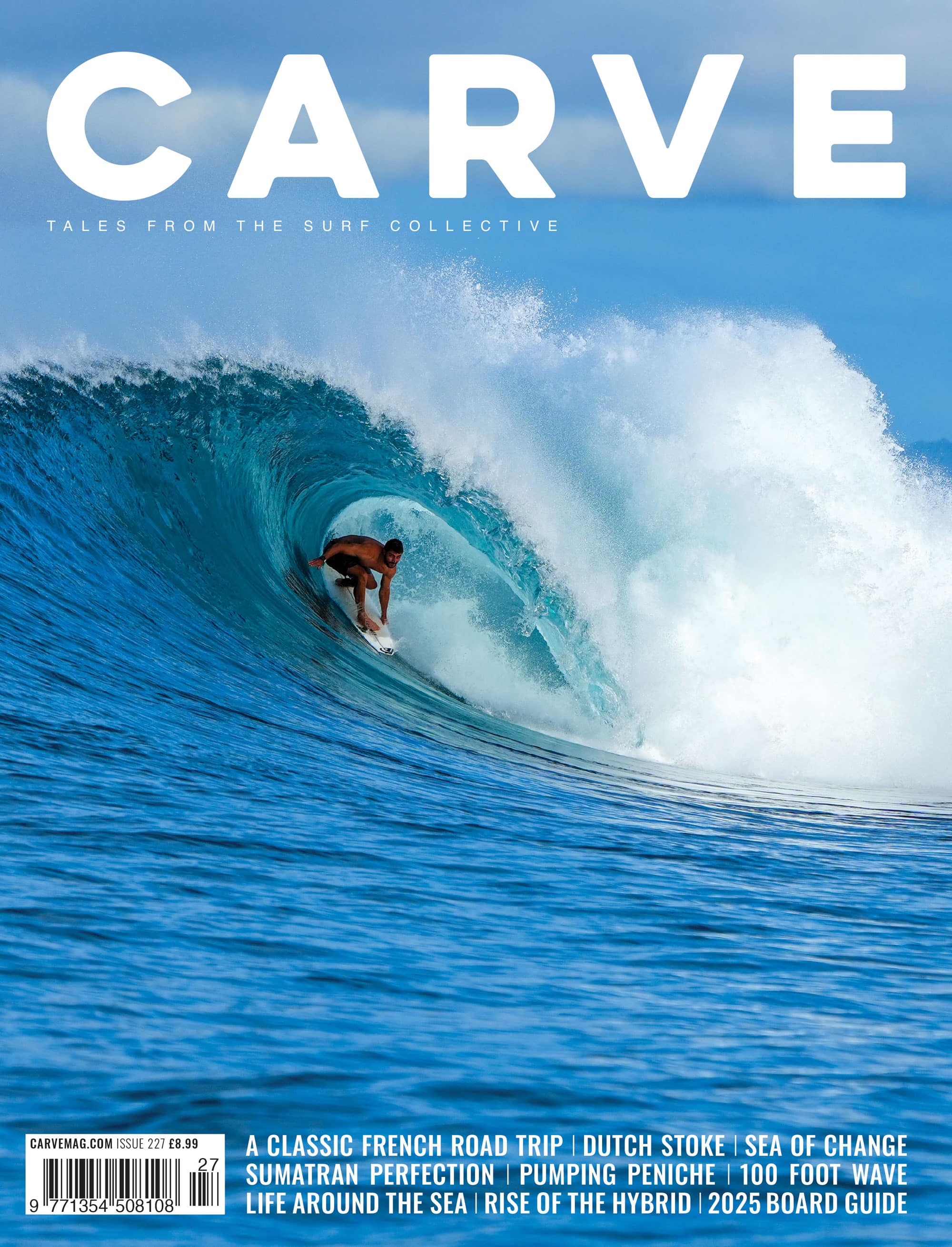[metaslider id=30676]
As far as British surfboard manufacturers and surf shops go it would be hard to argue that Tris Surfboards was perhaps the most legendary. Certainly in the west country. Shapers like Tris Cokes, Mooney MaCallum, Chops, Mark Hills all worked there and some of the most iconic sprays produced by Neil Wernham and Teeps decorated their boards. At the heart of it all over all these years has been Johnny Manneta one of the best glassers and finishers of a surfboard the country has seen.
Johnny was a London Mod who got caught up in surfing via a family connection, a sense of adventure and a friendship with one very enigmatic waterman, one of the best surfers in the country at the time, classic anti establishment lover of life Tris Coates. Johnny met Tris on one of his visits to Porthtowan in the sixties and they have been best friends ever since. Through their youth and the sixties to the eighties these two were pretty much at the heart of everything that went on in Porthtowan and St Agnes. From shaping on the beach, then in the back room of a rented chalet on the cliffs of Porthtowan they took Tris surfboards from an idea to iconic surf brand. They set up one of Europe’s first surf shops and were some of the first surfers in Newcastle and Saltburn, all the while focusing on the two most important things in their lives: surfing and partying.
When you look back at this age they are the halcyon days of surfing in my mind. So much so that many of today’s brands and hipsters spend most of their lives and a lot of money trying to recreate the ‘look’. Note I say the ‘look’ because the actual subculture of surfing, when most the participants were underground bohemian explorers is long gone. You can grow your hair and beard, you can ride old boards but that certain spark, a mix of carefree abandon, naivety, open mindfulness and I guess hippy outlook was overrun a long time ago. But the ‘stoke’ is still there. I know some people hate this term, but I’m afraid I still don’t know a better phrase for it.
Johnny is quietly spoken, assured, intelligent and his book reflects his journey from his early days in London hanging out with mods and mobsters to his transformation into a surfer, the setting up of Tris and his subsequent adventures. He has a great outlook on life and there are many funny little moments as well as interesting views peppered through the books pages. It is a great accomplishment to even remember half the adventure given the amount of spliffs that were smoked, but as Johnny points out early on even the weed has changed over the years, from a mild class B hippy drug after being genetically modified by unscrupulous drug dealers for profit.
I have to add a disclaimer here because as a Porthtowan grom Johnny was, a major influence on mine and many others, surfing life. The boards in his shop, the stories, the Tris surfboards and surf shop crew were all held in high esteem. I actually found the surfboard factory before I started surfing wandering around the countryside. Small old farm buildings with some sort of dust and chemicals strewn outside, dark windows, rows of surfboards inside it was down the road from a campsite I was staying on. I was intrigued by the boards, the strange hairy fellas who turned up one afternoon, not so much. They looked pretty scary. A year later I was stood in Tris surf shop and it soon became the centre of my grom universe. It was small but rammed with shiny sticks which us groms would salivate over. If a new one hit the rack all the groms would all go down and check it out. The Tris logo was so revered it was considered bad luck to put wax over it. Behind the counter was Johnny who was patient, would talk you through rocker and rails shapes and if there was a quiet five minutes between relieving holiday makers of their spending money, tales of mystical waves around the country and beyond.
With a view of the sea, the only skate friendly area in the village and handy seating the shop forecourt was a hangout for locals and anyone who hit the village. Men with sleek boards and foreign accents would turn up and everyone would check out their rides with design theories from overseas, stories and girlfriends. Sometimes they stayed and got dragged into the village scene, sometimes they moved on. In short it was a portal to the world more than a simple shop and Johnny was its keeper. More than anything there was a certain intelligence, wit, healthy disregard for politics and overlords, and inquisitivy bred on the forecourt. In the nineties it led to the formation of Surfers Against Sewage, now based in St Agnes, a movement started in the main by surfing residents of Porthtowan, Johnny being one of them, even though he knew exposing sewage on his beach may harm his own business.
I could go on but I will leave that to the book, suffice to say the boards which were adorned by the iconic art of Neil can now attract prices in their thousands, other boards from the seventies and eighties are now sought after collectors items and the shop is still the centre of the village surf scene. “Who’d have thought?” said Johnny when I asked him what he made of it all. He genuinely means it. He built himself a huge eco-friendly house out of logs and recycled timber washed up on the beaches around Porthtowan, teaching himself carpentry on the way, with an ethos of focusing on what he could do and doing it well rather than listening to nay sayers and being brought down by the things he couldn’t do. It is so big and cool random people stop on their way past and wander in to have look at it. “I needed a house, didn’t have much money so I just thought I’d build one,” he says. No big deal.
Johnny’s life has been a life well spent living life well and “Looking For Something To Find” to find is a great book for lovers of surfboards, surfing culture and history. I fired Johnny a few questions about how it came about…
What was the inspiration to sit down and write a book?
Have you ever tried writing a f**king book standing up? Sorry, Steve. I will try and be serious…
The inspiration came from my partner Pip. She said, ‘I notice when you tell a story people always listen. You tell a damn good story, why don’t you write them down? They love your recordings for the First Wave project. Tell it like it was and is.’ Which, after a lot of editing, turned into Looking For Something To Find. I didn’t sit down to write this book. I was laying in a hammock!
What was your favourite decade in surf culture to date and why do you consider it so rich?
Love them all! And still loving them. Look at what I have been blessed with. The sixties: Mods, music and motorbikes. The seventies: love and peace. Make love not war. Yep – up for that. Along with the hippie headbands, LSD and flares, experimenting with life. The eighties: easy living, easy travelling and no boundaries. The nineties: saving the planet and the oceans, building my dream, including building my home. And the here and now, the 21st century, still living the dream. So, as you can see, a hard one to call, eh?
I guess normally this would usually be the cue for me to say, ‘Had to be the early days, man.’ Well, actually, this is a tricky question to answer. The early days were fantastic but recently, surfing in the tropics in Central America, have been phenomenal for me. The seventies surfing scene was so rich, because of the attitude back then and the lack of crowds. Now it’s all changed but the scene when I get down to Costa Rica harks back to those good old days.
Was the surf culture the same around the country or do you think Cornwall being the end of the line was different?
Oh, yeah, Cornwall was one of the last frontiers. You were kind of left to your own devices. I think the stoke was the same for all surfers, everywhere, in the early days but, even with Newquay being the centre of the surfing culture, there were some real out there soul surfers, myself included, tucked away in their vans, hiding in the deepest depths of Kernow.
Right now there are a lot of surfers trying to rediscover an era and look that you actually set: retro boards, beards. Did you realise you were highly fashionable at the time and what do you think of the resurgence?
Of course we did, Steve. We were dedicated leaders of underground fashion. Mind you, Tris had a hard time growing a beard! And, hey, if it makes you happy to ride a retro board and get your beard wet, so be it.
Who was the best surfer you have seen surf and why did you rate them so highly?
On the world scene, no contest, Lopez. Mr Cool for his technique and style. On the European or British scene, Tigger Newling, he had the attributes of Lopez. I rate these guys so highly because of their ability to be so in tune with the waves, whether watching Tigger out at Porthleven on the monster double overhead days, or Lopez in Biarritz, both just embraced the waves. Super cool. Their technical ability was second to none.
What is the most you have been offered for one of your collectors item boards, what was your reaction and what do you make of this occurrence?
I have had offers into the thousands for one of the early Tris boards. But the collector who offered me this huge wodge of dosh kind of knew what my reaction was going to be: ‘Sorry, no thanks, it ain’t for sale.’ But there it is, hanging up for all to see in Tris Surf Shop and that’s where it will stay.
How did the iconic Tris logo come about, who designed it, what does it signify?
Tris and I put a few ideas together with inspiration from Rick Griffin and asked a brilliant artist from Aggie, named Keith Flack, to come up with a logo for the boards. After a few months and a lot of weed the iconic logo began its legendary journey with Tris Surf Boards and Tris Surf Shop. The logo is timeless and signifies all that is true about surfing: the sun, the waves and the lone surfer. A rarity these days but it’s out there. You just have to try a little harder to find it.
Tris Coates in three words..?
Haha, Steve you gotta be joking haven’t you! Well I guess it would have to be … Stark raving mad! Or as Tris once said of himself, ‘Self serving bastard.’
I think it is fair it say he has been a major influencer on your life with ups, downs and a fair bit of sideways. Why did you hit it off and what is the funniest thing you have ever seen him do/get involved with that we can’t be sued for?
Well we didn’t really have much choice; there was nobody else around at the time, so we were stuck together! We both thought “work” was a dirty word and neither of us really liked the idea of working for somebody else. As for the funniest thing I have seen him do? Try and shape a surfboard! But hey, he got the hang of it and to this day his boards are still sought after classics.
What was Porthtowan like when you first arrived?
Pumping.
Has it changed much?
Yeah. Like all good surf spots change will come, for better or for worse. Obviously, the early days when Tris, a few others, and myself, were hanging out, were absolutely magic and I will always think myself lucky for living through that era. But, of course, change has to come. Running a business on the beach means I have seen the village grow over the years, not so much in size as in reputation. After the hazy days of the seventies, Porthtowan actually turned into a pretty hardcore place, it never lost its charm but thanks to a variety of factors it wasn’t exactly on the list of family friendly beach holidays. This was not always great for business but it did mean the waves stayed quiet and the local crew had the place to themselves. It was wilder than it is now, it epitomised the Badlands vibe and, for guys like yourself, Minzy, the Hendy brothers and the rest of the posse, it was a good stomping ground. Nowadays it’s much more user friendly, the shops are busier and, guess what, it’s bloody crowded.
Being in the midst of the sixties and seventies there is mention of a fair amount weed in the book, but I noticed the specific paragraphs that seem to warn readers on the dangers of skunk and the drugs. Why is this?
Well, Steve, I am not about to start preaching but I do feel that drug use in the early days and the modern situation has changed somewhat. The difference between the taking of drugs to get high in the old days and the use and abuse of drugs in modern society, is pretty obvious to me. In the early days, I am thinking of surfers, but I am sure it was similar in all walks of life; like-minded people smoked a little weed and dabbled to get high. Now the drug culture has evolved and things are more business orientated. In a way it’s become more normalised and less of a counter-culture. This leads to massive problems on a global scale, unscrupulous dealers cutting the drugs for big bucks, and the resulting patterns of abuse and, ultimately, tragedy. Just look at some of the legends of surfing, the needle and the damage done.
What life advice would you give to any younger surfer reading this.
Never tire of chasing your dreams. Try saying ‘Hi’ to a stranger in the line up, don’t worry about the ‘I am Best’ T-shirt. Try soul surfing one day. It is good for you. Don’t be a twat in the ocean and last, but not least, respect your environment.
Are there any ambitions to produce a Tris heritage range?
It is happening! Tris is shaping and Neil Wernham is spraying. Click here to find out more
What’s next in your life of adventure?
The Film!
“Looking for something to find” is available on Amazon or here www.toadhallpress.co.uk





